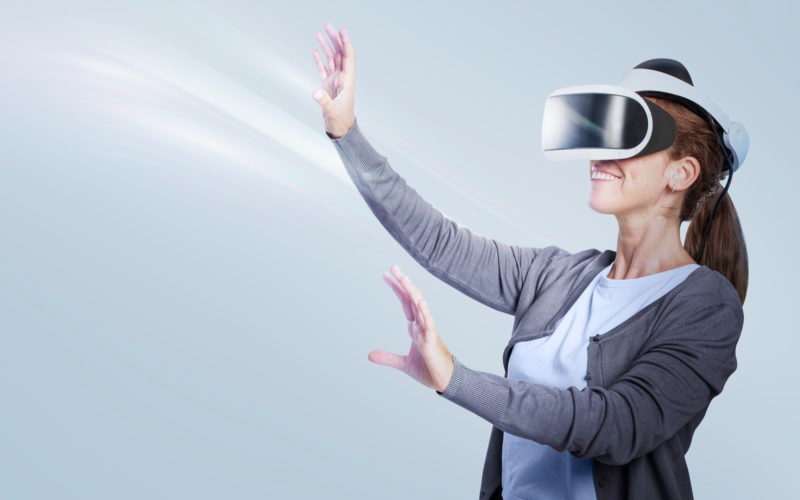In today’s digital era, where attention spans are shorter than ever, visual storytelling has become a powerful tool for engaging audiences and effectively communicating your message. Web design, in particular, has embraced the art of visual storytelling, as it allows designers to create immersive and captivating experiences that not only inform but also entertain and inspire. By leveraging the power of visuals, you can craft a narrative that resonates with your visitors, leaving a lasting impression and fostering a deeper connection with your brand.
This article will help you incorporate visual storytelling techniques into your web design for a smoother and more seamless user experience. Read on for the insight!
The Importance Of Visual Storytelling
Visual storytelling is not just about pretty pictures; it’s a strategic approach to conveying information in a way that is both compelling and memorable. Through the skillful use of visuals, you can guide your audience on a journey, evoking emotions and creating a sense of connection that goes beyond mere text or data. This technique taps into our innate human tendency to process and retain information more effectively when it is presented in a visually engaging manner.
Crafting A Captivating Narrative
To truly harness the power of visual storytelling, you need to craft a narrative that captivates your audience from the moment they land on your website. With the help of web design agencies like Smartly Done, this narrative should be woven throughout the design, with each visual element contributing to the overall story you’re trying to tell. Whether through compelling imagery, animated transitions, or interactive elements, the goal is to create a cohesive and immersive experience that keeps your visitors engaged and invested in your brand’s story.
Establishing An Emotional Connection
One of the key strengths of visual storytelling is its ability to create an emotional connection with your audience. By tapping into universal human emotions and experiences, you can forge a deeper bond that goes beyond mere functionality. This emotional connection can be achieved through the careful selection of visuals, color palettes, and overall aesthetic, all of which can evoke specific feelings and resonance within your viewers.
The Role Of User Experience
While visual storytelling is undoubtedly a powerful tool, it’s important to strike a balance between aesthetics and functionality. Your website’s design should not only be visually appealing but also intuitive and user-friendly. The story you’re telling should seamlessly integrate with the overall user experience, guiding visitors through your website in a logical and engaging manner.
Embracing Multimedia Elements
In web design, visual storytelling extends beyond static images and graphics. You can leverage the power of multimedia elements, such as videos, animations, and interactive content, to create a truly immersive and dynamic experience. These elements can bring your story to life, captivating your audience and leaving a lasting impression.
Consistency And Branding
Visual storytelling is not just about creating a one-time experience; it’s about building a consistent and recognizable brand identity. Your visuals should align with your brand’s values, personality, and messaging, creating a cohesive narrative that resonates across all touchpoints. This consistency not only strengthens your brand’s recognition but also reinforces the emotional connection with your audience.
Responsive And Adaptive Design
In today’s multi-device world, it’s crucial to ensure that your visual storytelling techniques translate seamlessly across various screen sizes and platforms. Responsive and adaptive design principles should be at the forefront of your web design strategy, allowing your visuals to maintain their impact and storytelling power, regardless of the device being used.
Measuring The Impact
While visual storytelling is undoubtedly a powerful tool, it’s essential to measure its impact and effectiveness. By analyzing user engagement metrics, such as time spent on your website, bounce rates, and conversion rates, you can gain valuable insights into the effectiveness of your visual storytelling approach. This data can then be used to refine and optimize your strategy, ensuring that your visuals are resonating with your target audience and delivering the desired results.

Crafting A Cohesive Visual Language
In visual storytelling, every element contributes to the overall narrative. To create a truly cohesive and impactful experience, you need to establish a consistent visual language that weaves together various design elements, such as typography, color schemes, iconography, and imagery.
Developing a cohesive visual language begins with a deep understanding of your brand’s identity and the message you want to convey. This understanding should inform the selection and usage of design elements, ensuring that they align with your brand’s values and resonate with your target audience.
Typography is vital in creating a consistent visual language. The selection of fonts, their thickness, and styling can establish the tone and evoke particular emotions or atmospheres. For instance, a strong sans-serif font can communicate power and a contemporary feel, whereas a script font might suggest elegance and refinement.
Color schemes are another powerful tool in creating a cohesive visual language. Colors can evoke specific emotions and associations, so it’s essential to choose a palette that aligns with your brand’s personality and messaging. Additionally, consistent use of color can help guide users’ attention and create a visual hierarchy, enhancing the overall storytelling experience.
Iconography and imagery are also vital components of a cohesive visual language. Carefully curated and designed icons can effectively communicate complex ideas or actions in a visually appealing and easily recognizable manner. Similarly, the imagery you use should not only be aesthetically pleasing but also aligned with your brand’s identity and the story you’re trying to tell.
Maintaining consistency in the application of these visual elements across all touchpoints is key to creating a cohesive visual language. This consistency not only reinforces your brand’s identity but also helps create a sense of familiarity and trust with your audience, enhancing the overall impact of your visual storytelling efforts.
Leveraging The Power Of Emotion
One of the most powerful aspects of visual storytelling is its ability to evoke emotions in your audience. By tapping into universal human experiences and emotions, you can create a deeper connection and resonance that transcends mere functionality or aesthetics.
To effectively leverage the power of emotion in your visual storytelling, it’s crucial to understand your target audience and the emotions you want to elicit. This understanding should inform the selection of visuals, color palettes, and overall aesthetic, ensuring that they align with the desired emotional response.
For example, if you’re aiming to convey a sense of tranquility and relaxation, you might consider using soft, muted colors, natural imagery, and organic shapes that evoke a sense of calm and serenity. Conversely, if you want to convey excitement and energy, you might opt for bold, vibrant colors, dynamic imagery, and bold typography that captures the essence of movement and vitality.
Additionally, storytelling techniques such as character development, conflict, and resolution can be powerful tools for eliciting emotional responses. By creating relatable characters and scenarios that your audience can empathize with, you can guide them through an emotional journey that resonates on a deeper level.
It’s important to strike a balance, however, and avoid overwhelming or manipulating your audience with overly dramatic or contrived emotional appeals. The goal should be to create an authentic and genuine emotional connection that enhances the overall storytelling experience rather than detracting from it.
Embracing Interactivity And Engagement
In web design, visual storytelling takes on an interactive dimension, allowing audiences to actively participate and engage with the narrative. By embracing interactivity and engagement, you can create a truly immersive and memorable experience that fosters a deeper connection with your brand.
Interactive elements such as parallax scrolling, hover effects, and animations can breathe life into your visuals, transforming them from static elements into dynamic and engaging experiences. These techniques not only captivate your audience but also provide a sense of discovery and exploration, encouraging them to delve deeper into your story.
Gamification is another powerful tool for enhancing interactivity and engagement. By incorporating game-like elements, such as challenges, rewards, and progress tracking, you can create a sense of accomplishment and investment in your story, further solidifying the emotional connection with your audience.
It’s important to strike a balance, however, and ensure that interactive elements serve a purpose beyond mere novelty. They should complement and enhance the overall storytelling experience rather than detracting from it or causing confusion or frustration for your users.
Responsive and adaptive design principles are also crucial when incorporating interactive elements, ensuring that the experience remains seamless and engaging across various devices and platforms.
Storytelling Through Data Visualization
In an age where data plays an increasingly significant role, visual storytelling can be an effective tool for transforming complex information into engaging and understandable narratives. Data visualization techniques, when executed thoughtfully, can bring dry numbers and statistics to life, making them more accessible and memorable for your audience.
By leveraging the power of visual storytelling, you can present data in a way that not only conveys information but also tells a compelling story. This approach can be particularly effective in areas such as data-driven marketing, scientific communication, or business intelligence, where complex data must be conveyed clearly and impactfully.
Effective data visualization involves carefully selecting the appropriate visual representations, such as charts, graphs, or infographics, that best suit the data and the story you want to tell. These visuals should be designed with clarity and simplicity in mind, avoiding clutter or unnecessary embellishments that could distract from the core message.
Color theory and visual hierarchy also play a crucial role in data visualization. By strategically using color and emphasizing key data points, you can guide your audience’s attention and highlight the most important insights or trends within the data.
Additionally, incorporating interactive elements, such as filters or drill-down capabilities, can enhance the storytelling experience by allowing your audience to explore and engage with the data in a more personalized and immersive way.
Ultimately, data visualization through visual storytelling is about transforming raw information into a compelling narrative that resonates with your audience, fostering a deeper understanding and appreciation for the insights and trends contained within the data.
Building A Narrative Arc
Effective visual storytelling in web design often follows a narrative arc, guiding users through a structured and engaging journey that unfolds over the course of their interaction with your website. By crafting a well-designed narrative arc, you can create a cohesive and memorable experience that keeps your audience invested and engaged from start to finish.
The narrative arc typically consists of several key components:
- Exposition: This is the introduction to your story, where you set the stage, introduce key elements, and capture your audience’s attention. In web design, this could be achieved through a compelling hero section, an engaging video, or an arresting visual that immediately piques interest.
- Rising Action: As the story progresses, the rising action builds tension and intrigue, drawing your audience deeper into the narrative. This could be accomplished through interactive elements, parallax scrolling, or visuals that reveal new information or perspectives as the user navigates through your website.
- Climax: The climax represents the peak of the narrative, where the central conflict or question is resolved or a key revelation is made. In web design, this could manifest as a powerful call to action, a striking visual representation, or a pivotal piece of information that ties the entire experience together.
- Falling Action: After the climax, the falling action provides a sense of resolution and closure, allowing your audience to reflect on the journey they’ve undertaken. This could involve summarizing key points, reinforcing your brand’s message, or providing a clear next step for the user.
Finally, the conclusion brings the narrative to a satisfying end, leaving your audience with a lasting impression and a desire to continue engaging with your brand.
By carefully structuring your visual storytelling around this narrative arc, you can create a cohesive and compelling experience that guides users through a meaningful journey, fostering a deeper emotional connection and enhancing the overall impact of your message.
Conclusion
Visual storytelling in web design is a powerful tool that can captivate audiences, evoke emotions, and create lasting impressions. By crafting compelling narratives, leveraging interactive elements, and embracing data visualization techniques, you can transform your website into an immersive and engaging experience. Remember, the key is to strike a balance between aesthetics and functionality, ensuring that your visual storytelling efforts not only delight but also inform and resonate with your audience on a deeper level.
⸻ Author Bio ⸻
Alex Taylor is a seasoned web designer and digital storyteller with a passion for creating engaging and user-friendly websites. With a background in graphic design and a keen eye for aesthetics, he specializes in integrating visual storytelling techniques into web design to enhance user experience. Alex is committed to staying at the forefront of web design trends and continuously explores innovative ways to captivate audiences through visual narratives.












